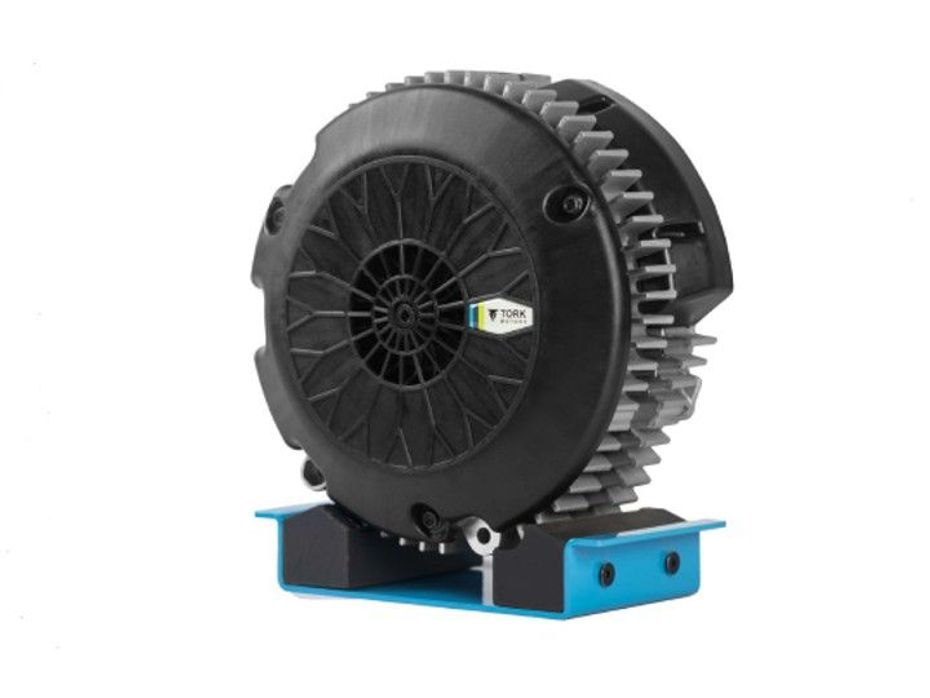
Tork Kratos ZigFF | First India-made Electric Motorcycle! | Price,...
- Jan 27, 2022
- Views : 13171


As much as we love internal combustion engines, they are fairly tough to work with. The list of moving parts and fluids that go around to ensure you have a grin plastered across your face as you wring the throttle is long. But electric motors, on the other hand, require less maintenance, and have relatively simple mechanisms… or do they? Let’s deep dive into the types of electric motors to understand their working.
Brushed DC Motor
This is the older generation of motor technology that dates back to the 1800s. As the name suggests, there are two or more brushes that rub against permanent magnets positioned opposite to each other. Here the brushes transfer electricity to the armature through contact with the commutator. However, the friction on the brush causes it to wear down with use. However, being simple and affordable to manufacture, these were widely used in the automotive sector for a long time. However, this type of motor is far less efficient and relatively noisy.
Brushless DC Motor
This is the most commonly used motor in the electric two-wheeler segment. This is a fairly new model, and is known to be efficient, quiet and less prone to overheating. This motor uses a permanent rare earth magnet at the centre which rotates by changing the direction of the magnetic fields of the surrounding stator coils. The biggest advantage of this construction is that this motor can sustain high torque for longer durations, compared to brushed motors. And because this is a frictionless motor, it can achieve higher top speed too. That said, it is slightly costly to manufacture.
Most of the e-scooters in our market, including the TVS iQube Electric, use a BLDC motor.

Permanent Magnet Synchronous Motor
Permanent Magnet Synchronous Motor is the next step of evolution, and is quite similar to a Brushless DC motor. Just like a BLDC motor, this uses a rare earth permanent magnet and a stator with coil wound over it. The resultant torque is much higher than a BLDC motor. Because of simpler construction, this one sustains higher speed without compromising on efficiency. In fact, at 92 percent, this motor boasts of the highest efficiency rate amongst the three motors.
The Ather 450X and the newly launched Oben Electric Rorr are some of the EVs on sale currently that use this kind of motor.

Tork Kratos ZigFF | First India-made Electric Motorcycle! | Price,...

Tork Kratos R Now Rs 37,500 More Affordable

EXCLUSIVE: This Is Tork’s Upcoming Electric Scooter

The Tork Kratos R Now Gets More Range With The New Eco+ Mode

Here’s How The Tork Kratos Is Created

“Customers Are Not Happy With The Price Increase” - Tork...

Exclusive: Affordable Tork Electric Bikes Incoming!

Urban Trim launched for Tork Kratos R Electric Motorcycle

Matter Aera 5000 vs Tork Kratos: Specification Comparison
 Revolt RV400
Revolt RV400
 Ola Roadster
Ola Roadster
 Oben Rorr
Oben Rorr
 ABZO VS01
ABZO VS01
 One Electric Motorcycles Kridn
One Electric Motorcycles Kridn
India's largest automotive community
 Mahindra BE 6
Rs. 18.90 Lakh
Mahindra BE 6
Rs. 18.90 Lakh
 Hyundai Creta Electric
Rs. 17.99 Lakh
Hyundai Creta Electric
Rs. 17.99 Lakh
 Mahindra XEV 9e
Rs. 21.90 Lakh
Mahindra XEV 9e
Rs. 21.90 Lakh
 MG Windsor EV
Rs. 13.99 Lakh
MG Windsor EV
Rs. 13.99 Lakh
 Vayve Mobility Eva
Rs. 3.25 Lakh
Vayve Mobility Eva
Rs. 3.25 Lakh